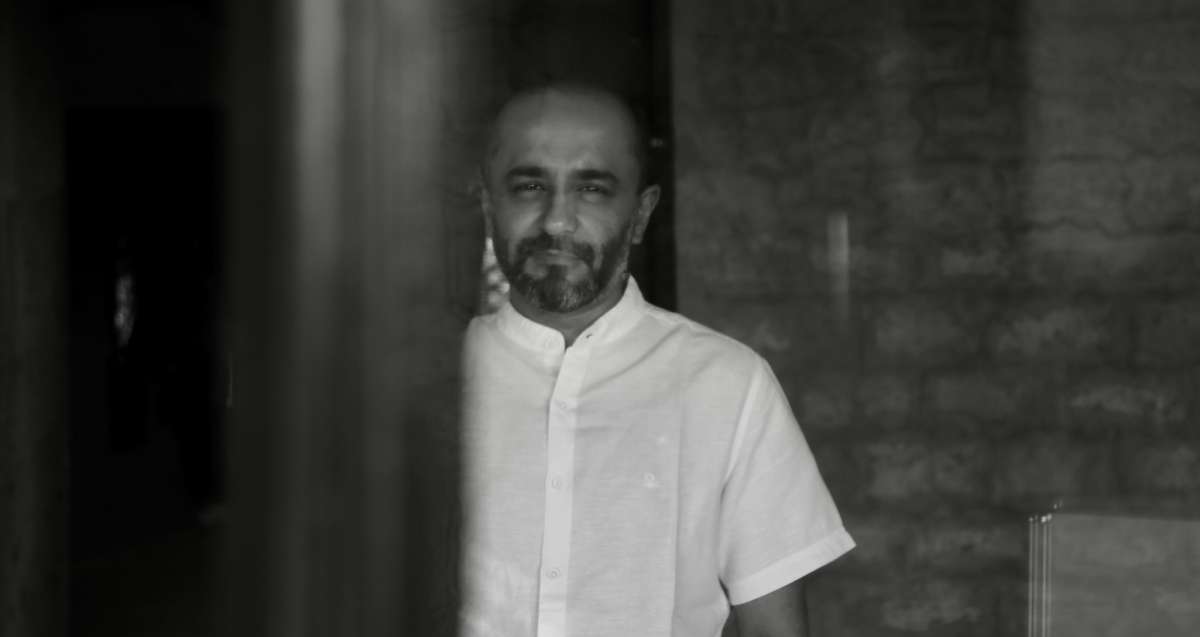The director confirms that many stories in ‘Money Opera’ do come from a space of vulnerability. When he started ideating it six years ago, he was clear that he wanted to work around stories of money — and the moment one thinks about money, it makes us vulnerable…writes Sukant Deepak
In the past few months, the neighbours had seen him entering the building several times at night. One day, a family finally told him — “You must not enter that space post 10 p.m., it is haunted…”
And thus was born the character of the ghost in Amitesh Grover’s latest work ‘The Money Opera’, written by Sarah Mariam which opened at the Serendipity Arts Festival in Goa.
Staged at an ‘unnamed building’, spread over multiple floors and terrace, the audience followed the performers, becoming a part of what was unfolding before them. Lines were getting blurred, thoughts intersected at different points, and those hearing and seeing tales enacted by strangers knew somewhere deep down, the truth belonged to spaces unlit in that condemned building. For more than two hours, they entered a world, enticing but self-reflective. Perhaps that is the reason one could witness several breaking down, many walking out to return the next day. The many tales may have evoked multiple reactions, but the strongest was vulnerability.
The director confirms that many stories in ‘Money Opera’ do come from a space of vulnerability. When he started ideating it six years ago, he was clear that he wanted to work around stories of money — and the moment one thinks about money, it makes us vulnerable.
“It has issues of class, gender, urban and rural, age and profession, and intangible feelings like guilt, loss, sinning and morality. When I started to think about this production, I looked for characters and stories that were not usual. The tales we never heard. Characters we do not meet in other spaces. And I wanted the audience to be close to those characters.”
Grover was clear that the project was not going to be in an auditorium. While he wanted to open it in Delhi, and had started looking at abandoned buildings, he got a call from Serendipity. “I was not sure initially as a project like this needs a lot of familiarity with the people, site and space. But I agreed. In fact, the unfamiliarity help. After finalising this building, I came with the civil and safety team and started to work on it with them. Interacting with this structure, we started to think about how the presence of bodies changes buildings and how buildings change us. And from there on, several other characters and stories came up. The casting process was also quite unique. I was not going to only have actors in this process.”
The production engulfs multiple stories — someone who loses his father who was a performer and grew up in shame because of his (father’s) profession. But how he recognized that because of that he was able to get his education. A little girl who is a house help in a Lavani star home and treats the little girl as her own and the only thing she doesn’t reach her is the art. The little girl promises to replace her, so she steals the art form from her. Through these stories, they keep talking about how money affected their relationships. There is also a story of an architect whose father had a lover and he would make a family in which his lover was involved. And he comes to the building to book a floor and the lover comes to this building and dreams of the family. The unfulfilled past and the eerie quality of the building frame these stories.
While some of the were found with the characters, sometimes it was a picture or a story that someone shared.
Grover, who always works with an unbound script as it is only then that the written word becomes a part of his process and he can find his truth, has been working with Mariam for the past four years. “We collaborate often and it is an interesting relationship, I create a universe and share it with her and she thinks about the lives that inhabit that world.”
This director’s work has never been linear, and he creates a world where there are different people, intersecting with many small truths.
“For me, it becomes an opportunity to analyze the world outside and in the fictional world, I create. There are no easy solutions and everyone is standing at intersections. All the characters that Sara develops are on the spectrum. They invite you to be vulnerable and think about things you’ve been putting away.”
Planning to take it to Delhi and tour with it to major cities, Grover who made ‘The Last Poet’ during the Pandemic says this project is part of the transition.
“I attend all the shows and observe the audience, and how they engage. And change the sequence of how things end. Sometimes, I change how something progresses. These changes make a huge difference in how the audience responds to the show. I think they perform while watching the play. While I open the piece with an opera singer and close it on the terrace, the epilogue talks about how the building has been nothing less than a hurricane, coming for all of us. For me, it is very interesting to observe the people. They are moving through the building, seeing different characters. There’s a cohesive whole and how it holds everything together.”
Talking about his velocity pieces, he says he writes them from an inner rage, that translates to poetry. “I do not understand how living in a world that we do is it possible not to be angry, and that finds its way into what I create.”
ALSO READ- ‘Pather Panchali’ is the only Indian film among ‘100 Greatest Movies of All Time’

Leave a Reply